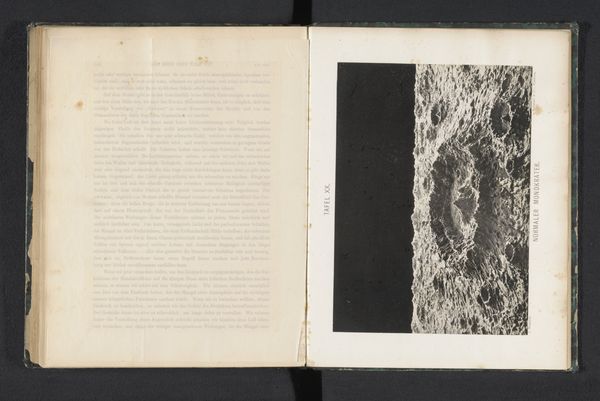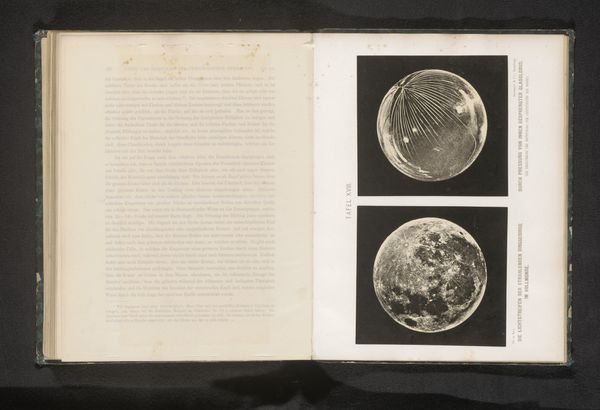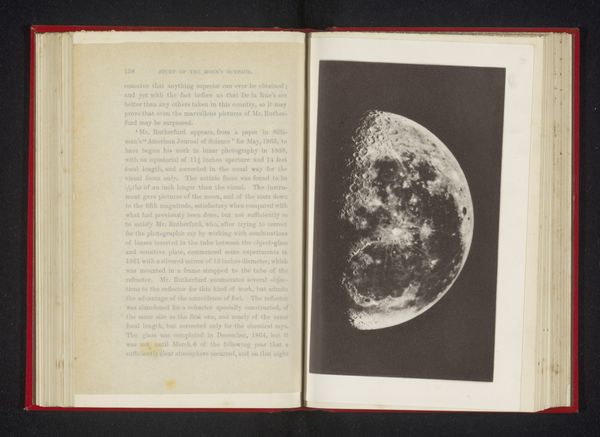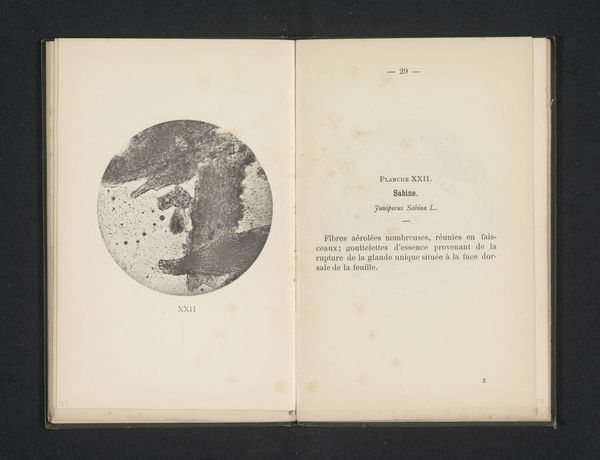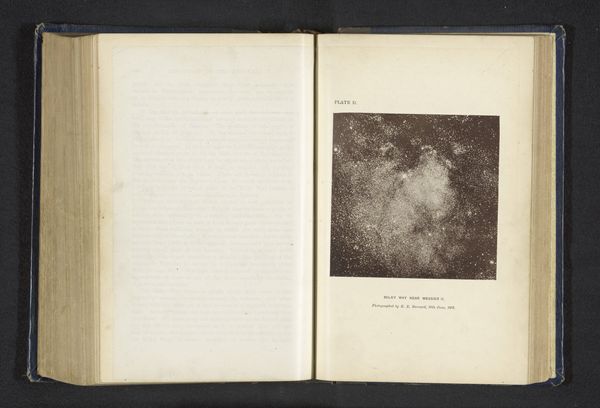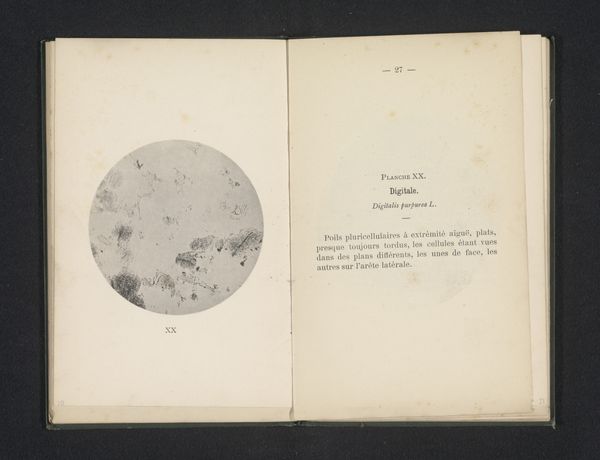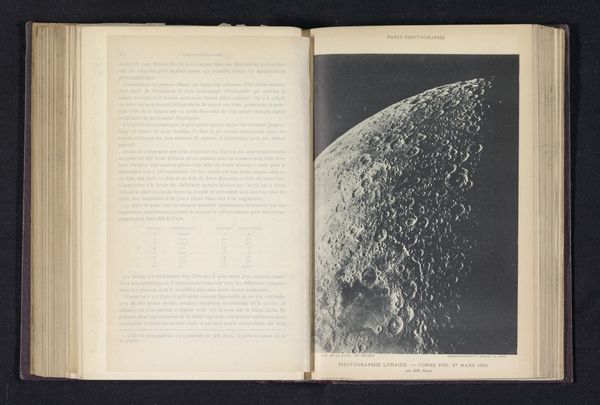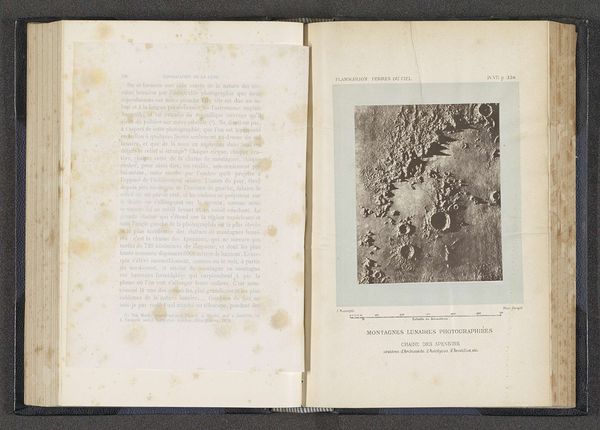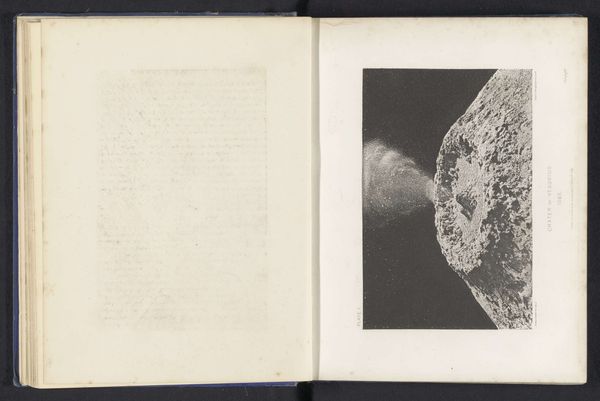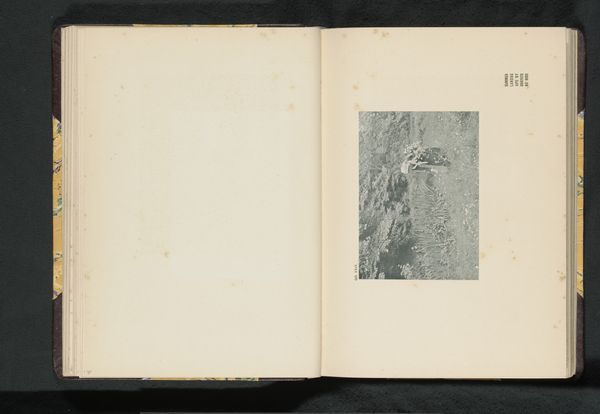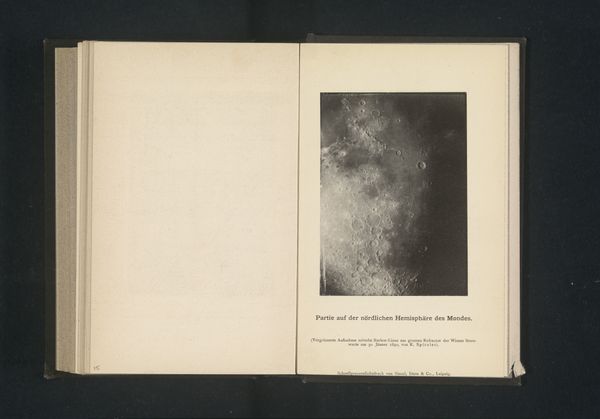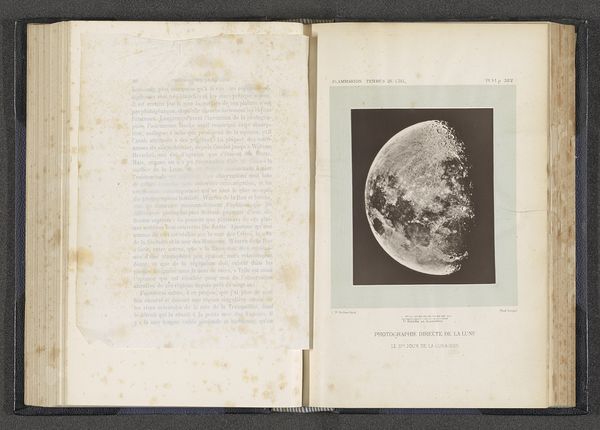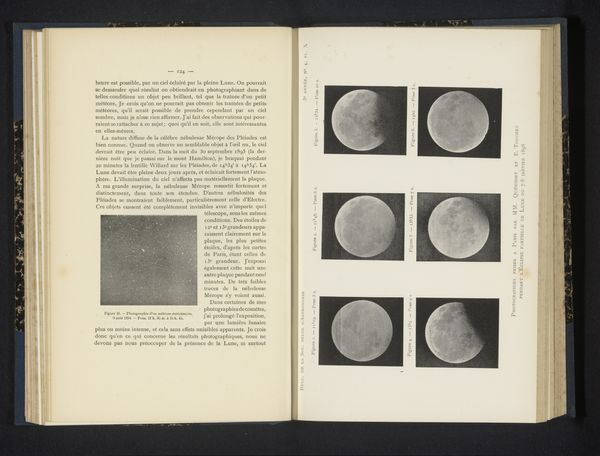
print, photography
# print
#
photography
Dimensions: height 75 mm, width 119 mm
Copyright: Rijks Museum: Open Domain
Curator: Let’s delve into Warren De La Rue's “Spots and Faculae on the Sun,” a photographic print that possibly dates between 1881 and 1889. Editor: It’s captivating; a grainy, almost ghostly orb. Those dark blemishes set against the lighter field – they seem like voids, don't they? Disturbing the perfection you might expect from celestial bodies. Curator: Precisely, and it’s crucial to see it as more than just scientific documentation. The late 19th century was a period wrestling with new scientific understandings, shifting power structures, and photographic techniques. De La Rue’s process – his labor in creating such a stark image of something so distant and powerful – needs consideration. How was the image created, distributed, and received within various social classes of Victorian England? It shifts away from idyllic or picturesque landscapes dominating the fine art of that era, using photography to investigate new terrains that reshape colonial and technological thinking. Editor: I am drawn to the way the materials themselves—the print, the photographic process— speak to that industrial moment. You can almost feel the chemical process at play in those contrasting areas. Did he painstakingly work in a darkroom with toxic components, experimenting with lenses, time? It grounds the astronomical into human practice; turning something monumental into the purview of a laborer-scientist who is actively participating and witnessing new discoveries about nature's production methods through hands-on interaction with them. Curator: Right. This image also plays into discourses around visibility and power. These blemishes— the spots and faculae —were known but rarely so viscerally rendered to the public. Photography democratized astronomy and other sciences for popular consumption, changing traditional knowledge hierarchies as scientific study left the academies for more direct circulation and manipulation. Editor: De La Rue gave tangible presence to cosmic phenomena, and its grainy quality also provides tactility in the intangible. This makes me rethink materiality as a whole, its use, effect, and cultural associations. I agree, placing such work alongside other artifacts helps uncover the dynamic systems that produced both knowledge and power. Curator: Absolutely. De La Rue's choice of medium challenges established modes of thinking about visual experience during this transformative era. This print demands we examine art's broader implications and position in social dialogues surrounding knowledge, politics, and labor. Editor: De La Rue's “Spots and Faculae on the Sun" embodies not just scientific but also creative ambition by giving us an aperture towards what comprises nature's own visual making.
Comments
No comments
Be the first to comment and join the conversation on the ultimate creative platform.
